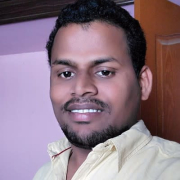

Teradata and Alteryx Designer compete in the data processing and analytics category. Teradata seems to have the upper hand with its advanced analytics capabilities and performance for large datasets, whereas Alteryx excels in user-friendliness for data manipulation.
Features: Teradata is known for rapid data processing, scalability, and parallel architecture. Key features include advanced in-database analytics, geospatial and temporal analytics, and effective workload management. Alteryx Designer offers a user-friendly drag-and-drop interface, ease of data integration, and transformative data manipulation tools.
Room for Improvement: Teradata faces high costs and challenges with cloud scalability and could improve OLTP processing and Big Data platform compatibility. Alteryx Designer could benefit from reduced licensing costs, expanded integration capabilities, and enhancements in data science and machine learning functions.
Ease of Deployment and Customer Service: Both Teradata and Alteryx Designer offer flexible deployment options, including on-premises and hybrid cloud solutions. Teradata is noted for comprehensive technical support, while Alteryx is praised for user-friendly deployment but faces challenges in response times and administrative functionality.
Pricing and ROI: Teradata's premium pricing is seen as justified by its robust features, appealing to larger organizations, but may deter smaller businesses. Alteryx Designer is also expensive, particularly for advanced functionalities, but both provide valuable ROI through improved performance and automation, delivering increased efficiency and customer satisfaction.
We have realized a return on investment, with a reduction of staff from 27 to eight, and our current return on investment is approximately 14%.
There are areas where they need to improve response time and overall competence.
The customer support for Teradata has been great.
Customer support is very good, rated eight out of ten under our essential agreement.
The technical support from Teradata is quite advanced.
This expansion can occur without incurring downtime or taking systems offline.
Teradata's scalability is great; it's been awesome.
Scalability is complex as you need to purchase a license and coordinate with Teradata for additional disk space and CPU.
I find the stability to be almost a ten out of ten.
The workload management and software maturity provide a reliable system.
Unlike SQL and Oracle, which have in-built replication capabilities, we don't have similar functionality with Teradata.
If Teradata could provide a list of certified experts, that would be fantastic.
It's cheaper than Palantir, but even Alteryx is too much for small clients.
Teradata is much more expensive than SQL, which is well-performed and cheaper.
Initially, it may seem expensive compared to similar cloud databases, however, it offers significant value in performance, stability, and overall output once in use.
We spent roughly $295,000 on setup costs.
The main valuable aspect is the simplicity of use across all features.
Teradata's security helps our organization meet compliance requirements such as GDPR and IFRS, and it is particularly essential for revenue contracting or revenue recognition.
The data mover is valuable over the last two years as it allows us to achieve data replication to our disaster recovery systems.
| Product | Market Share (%) |
|---|---|
| Alteryx Designer | 1.8% |
| Teradata | 0.8% |
| Other | 97.4% |


| Company Size | Count |
|---|---|
| Small Business | 12 |
| Midsize Enterprise | 3 |
| Large Enterprise | 17 |
| Company Size | Count |
|---|---|
| Small Business | 26 |
| Midsize Enterprise | 12 |
| Large Enterprise | 49 |
Teradata is a powerful tool for handling substantial data volumes with its parallel processing architecture, supporting both cloud and on-premise environments efficiently. It offers impressive capabilities for fast query processing, data integration, and real-time reporting, making it suitable for diverse industrial applications.
Known for its robust parallel processing capabilities, Teradata effectively manages large datasets and provides adaptable deployment across cloud and on-premise setups. It enhances performance and scalability with features like advanced query tuning, workload management, and strong security. Users appreciate its ease of use and automation features which support real-time data reporting. The optimizer and intelligent partitioning help improve query speed and efficiency, while multi-temperature data management optimizes data handling.
What are the key features of Teradata?In the finance, retail, and government sectors, Teradata is employed for data warehousing, business intelligence, and analytical processing. It handles vast datasets for activities like customer behavior modeling and enterprise data integration. Supporting efficient reporting and analytics, Teradata enhances data storage and processing, whether deployed on-premise or on cloud platforms.
We monitor all Data Integration reviews to prevent fraudulent reviews and keep review quality high. We do not post reviews by company employees or direct competitors. We validate each review for authenticity via cross-reference with LinkedIn, and personal follow-up with the reviewer when necessary.